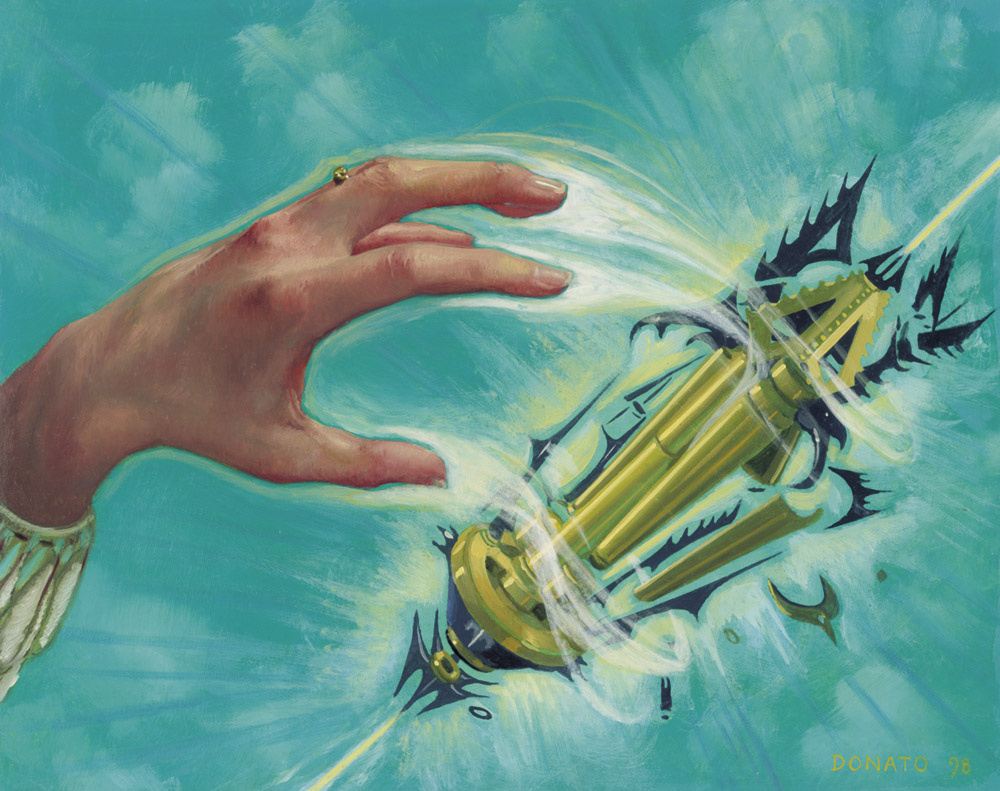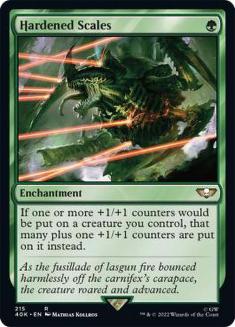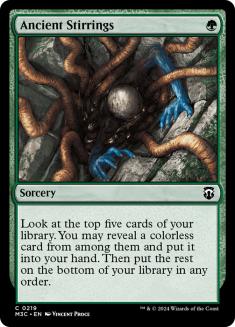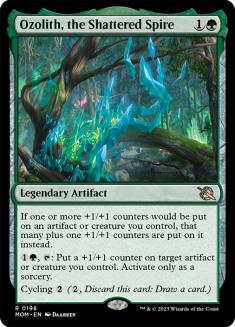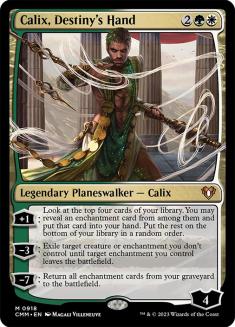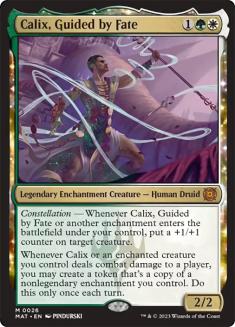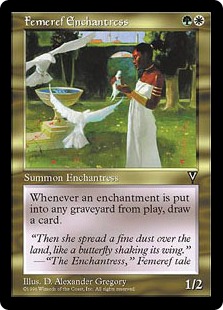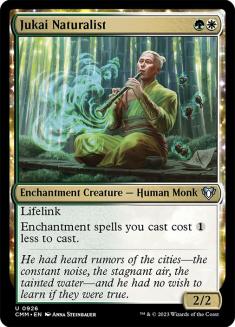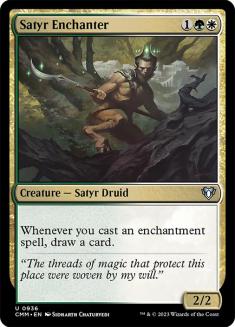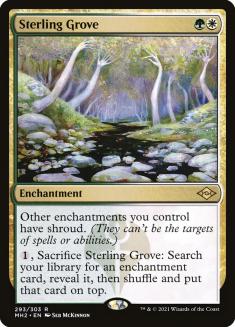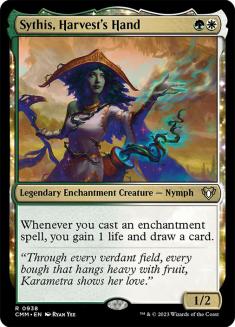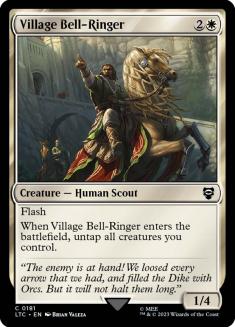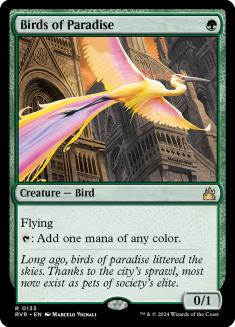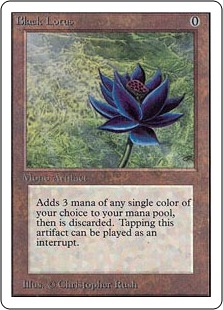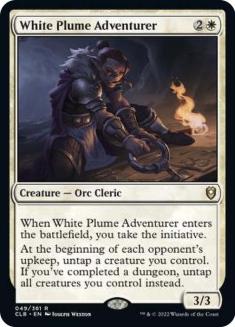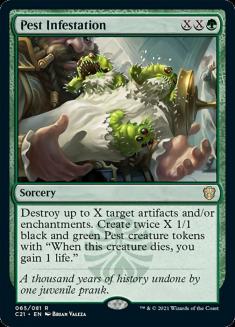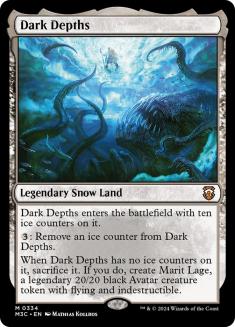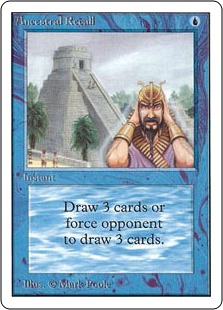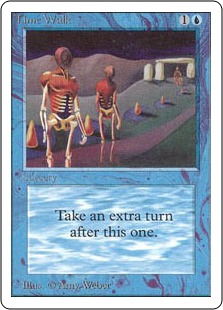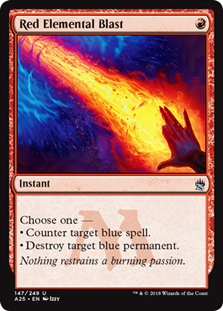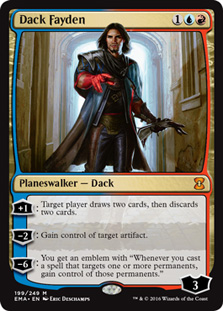Happy Wednesday, gamers! With a little gap between set releases and digital Cubes, it seems as Cube a time as ever to turn my attention towards some Cube design principles. Today I’ll be discussing color imbalance in Cube broadly, with a specific focus on a recent redesign I did of my Powered Grixis Twobert.
Color Balance
It’s considered the default for Cubes to have equal or nearly equal representation of all five colors of Magic. Of course, Cube is a means of creative expression and there are all kinds of reasons to stray from this principle. Popular examples include Vintage Cubes skewing a little more blue or color-restricted Cubes that eschew one or more colors entirely. If an imbalance of colors serves your Cube, then there’s no reason to strain your design in the arbitrary name of color balance!
I alluded to an idea I had to trim the total number of green cards in my Artifact Twobert in an article last year, and since then I’ve done exactly that. If you pull up the updated list on Cube Cobra, you’ll see that there are about half as many green cards as the other colors. The manabase being comprised of five-color lands or lands that are artifacts made this imbalance relatively easy to pull off, and green just has fewer total cards that serve the environment than the other colors. I wanted some, but when I pushed green to try to occupy more space than it warranted, the environment suffered some for it.
The other side of that equation is that white, blue, black, and red all have longer lists of cards that I want to feature in an artifact-heavy environment. Color imbalance is equal parts a question of which colors provide a surplus of options, and which would require you to really scrape to make things fit. From there you also want to address the imbalance in the manabase, which will often require more creative solutions than the natural one offered in the Artifact Twobert.
For example, an item on my Cube bucket list is an Enchantress Cube, which, let’s be real, I would design as a Twobert. There are worthwhile cards to explore in black, blue, and red, but not nearly on the level of the explicit support that green and white offer. Just looking at the potential Selesnya gold cards alone paints the picture that a color imbalance might be desirable for such an environment:
And that doesn’t touch on build-around enchantments or enchantment removal, both of which I’d likely want to include. I’ve typically kept two-color gold sections to about three cards in my Twoberts, so Selesnya is going to be cramped here, while some color pairs like Dimir are going to be reaching. My expectation is that I would just elect to imbalance the Cube in favor of more total green and white cards. This would also need to be addressed in the manabase, where I imagine I’d featured a couple full cycles of two-color lands and possible some extra Selesnya lands along with only the green and white Triomes to make it both clear and possible that you’re going to want to play both green and white in this environment.
Powered Twoberts
As color imbalance pertains to more recent projects of mine, I spent a bit of time recently trying to come up with a satisfying five-color Powered Twobert list. I put out a theoretical list when I first wrote on the Powered Grixis Twobert, but I haven’t been able to convince myself that the environment offers anything more desirable than the color-restricted version. I think that a color imbalance is the way to go, but the specific elements just weren’t doing it for me.
Some of it is that there’s a lot of really generic stuff like Signets and Talismans that really crowd the space at 180 cards and don’t meaningfully justify green and white cards. Some of it is that Village Bell-Ringer as additional Splinter Twin support isn’t really a draw to white. And some of it is that most of the green cards are just much weaker than the rest of the Cube in absolute terms. I’ve cast a lot of Birds of Paradise in 540-card Vintage Cubes, but I can’t convince myself that I’d realistically want to do that here.
The actual nail in the coffin for the project for me was Fastbond. When you’re so likely to have one or more Moxen, why would you jump through hoops to try to make land drops? On top of that, I’m asking you to play Lotus Cobra, which only really does much if you’re already in on Fastbond, and I’m really pushing you to play one of the colors with the fewest total cards so that you can explore options that are lest consistent and arguably less powerful than the colorless options? This approach is not Vintage Cube Supreme Draft Trophy Leader approved.
The printing of White Plume Adventurer had me looking at this project again, and I decided to clone the file on Cube Cobra so that I could make changes on another page. I cut the stuff that I really hated and tried to find more appealing reasons to play green and white. Eventually, I landed on white mostly offering decent interaction and a couple of meaningful threats and green being largely similar, with Disenchant effects being some of the draw to both colors and Dark Depths combo as a new avenue to explore.
I tried looking at a bunch of two-card combos such as Solemnity and Nine Lives to overlap with Solemnity and Dark Depths and Solemnity and Devoted Druid, but all of these interactions just felt like different iterations of the Lotus Cobra and Fastbond problem. You just don’t want to try to assemble a combo that consists of two last picks. The issues I had with the project really crystallized when I looked at what I was attempting in the context of a combo that I tried in the Grixis version. All of this stuff was just harder to cast Painter’s Servant plus Grindstone, and despite some other cute interactions, those cards aren’t desirable to draft in a Cube with Time Vault.
I tinkered with the project a while longer, scrapping the junky combos and really focusing in on largely individual powerful cards and the lean combos that could more realistically hang. You can find where I landed with this project on Cube Cobra, though I’ll offer that this exercise is still strictly theoretical. I have not played with this list at all beyond mock drafts. What this project did inspire me to do was to take another look at the color balance in the Powered Grixis Twobert.
Updating the Powered Grixis Twobert
While most of my focus was on green and white when I was tinkering with the five-color list, the different point of view helped me to see the Grixis list in a different light. As I tried and failed to come up with satisfying solutions for green and white, I realized that my preferences skewed far more in favor of “every deck should be blue” than my original Grixis list even suggested. You never want to have to pass Ancestral Recall or Time Walk, after all.
This caused me to turn a critical eye on both Rakdos cards and mono-red cards, both of which I made a conscious decision to stretch a little further than I would necessarily like in my previous list. It just doesn’t make sense to go so long on dumpy rituals like Rite of Flame in a Cube that has so much and so much better mana acceleration. Similarly, Grapeshot is a level of redundancy on Storm that only gave the environment more last picks.
I also found that quirky cards like Red Elemental Blast and Pyroblast took meaningless hits in my effort to feature as many red cards as black or blue cards. The notion that red could be more powerful in some ways by trimming the total number of red cards was the most exciting discovery in my revision process. This was the revelation that pushed me to just include a higher number of Izzet cards. I want every deck to be blue, and I want more targets for the blue hate cards. I also had eschewed Dack Fayden from my previous list due to the “gotcha” nature of the card’s play patterns, but this is a Powered Cube after all!
You can find my updated powered Grixis Twobert list on Cube Cobra here. In looking over the list, you’ll find that some of the Izzet slots came from the Rakdos slots that were ultimately pretty disappointing, and since I don’t expect a strictly Rakdos deck to be successful, I also trimmed a Rakdos land so that the available mana-fixing will generally push you into blue.
Combating your own aptitude and biases can be a significant hurdle in Cube design. Sometimes you won’t be excited about an idea simply because it pertains to styles of decks that you don’t enjoy, but there is a more objective path to explore in terms of ensuring that the colors and archetypes that you choose to support are at least abstractly close in terms of their level of appeal. Color balance is the norm in the world of Cube, but color imbalance is a powerful tool that becomes more attractive the more specific your environment gets. Never let conventional wisdom get in the way of a good idea.

